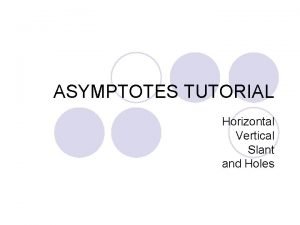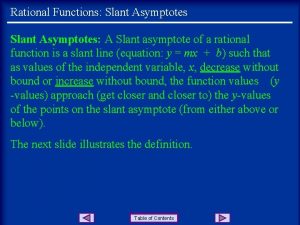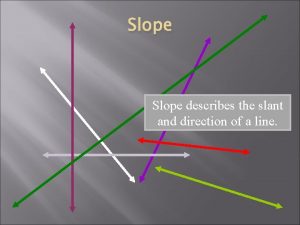SLANT EQ WHAT IS SLANT AND HOW CAN









- Slides: 9

SLANT EQ: WHAT IS SLANT AND HOW CAN DEMONSTRATING SLANT HELP ME TO BE A BETTER STUDENT?

TURN & TALK What behaviors do successful students demonstrate during class?

S IS FOR… SIT WITH PROPER POSTURE Key Points: üBack straight üFeet flat on the floor üBottom on the front-edge of the seat Non Examples: Head on desk Slouching in chair

L IS FOR… LEAN FORWARD AND LISTEN Key Points: üLean in towards the speaker üEyes on speaker; head and body facing the speaker üEars uncovered; no ear buds or hats üVoice at a Level 0 Non Examples: Hand covering ear Looking at something/someone other than the speaker Talking with a neighbor

A IS FOR… ASK PERTINENT QUESTIONS Key Points: üMentally asking yourself questions to check understanding üRaise your hand to ask questions when you don’t understand üThinking about the questions others ask Non Examples: Talking to others during class or blurting out Playing with objects Doodling

N IS FOR… NOD YOUR HEAD “YES” OR “NO” Key Points: üNod head up and down to show you understand or agree üShake your head side-to-side when you’re confused or don’t agree üEye contact with the speaker so the speaker can read your facial expressions Non Examples: Doing nothing when you don’t understand Avoiding eye contact with the speaker; facing away

T IS FOR… TALK WITH YOUR TEACHER Key Points: üAnswer the questions your teacher is asking üAdvocating for yourself üTalk with your teacher before or after class when you’re confused or need help üAsk if you can come in for extra-help üAsking what you can do to improve your grade Non Examples: Not answering questions Avoiding asking for help Doing nothing when you don’t understand or have low grades

TURN, TALK, WRITE • Why is each behavior of SLANT important? • How will each behavior lead to success in school?

SELF-ASSESSMENT • Which behaviors of SLANT do you consistently demonstrate at least 90% of the time? • Place a “+” next to these behaviors in your notes. • Which behaviors of SLANT do you need to focus on in order to be more consistent? • Place a “-” next to these behaviors in your notes.
















